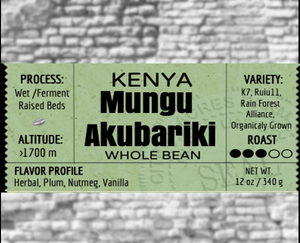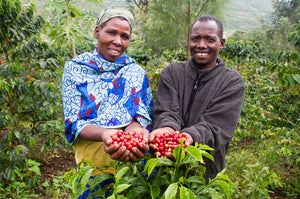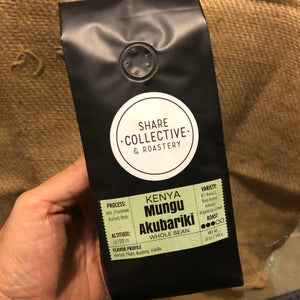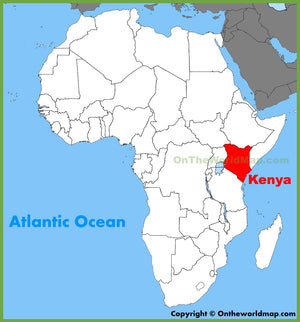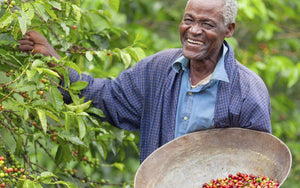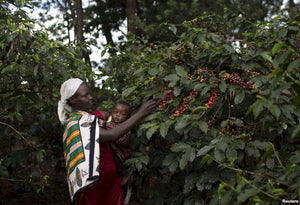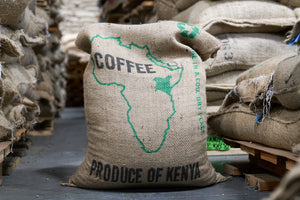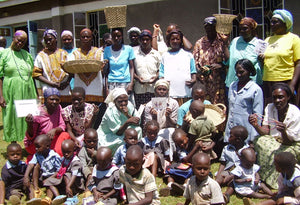Kenya Mungu Akubariki -Medium Roast
$ 17.95 – Sold Out
Mt. Elgon Coffees tend to be more Ethiopia-like, with heavy grapefruit, florals, and a delicate tea-like quality..
Farmers bring their coffee cherries to the coffee mill, where it is weighed and put into the hopper with the rest of that day’s collection. The farmer is given a receipt for the value of the coffee. The coffee is depulped using either a hand-crank machine or one that is powered (when electricity is available).
Factories will ferment coffee for 24–48 hours, then move the coffee through water channels, where the softened mucilage is sloughed off. Premium AA lots are sometimes sent to holding takes to be submerged underwater for an additional 24 hours.
The tanks are drained, and the coffee is given a quick “pre-dry,” or “skin dry,” laid out in full sunlight in thin layers on raised beds for about six hours; this is to prevent the parchment from cracking. The beans are then moved to raised beds where they are spread in thicker layers, and allowed to dry for 7–10 days. The coffee is typically dried to 11–12% moisture.
A LITTLE HISTORY: Established as a British colony specifically for its moneymaking potential, Kenya became a coffee powerhouse as a way for the empire to control both the tea (already a Kenyan staple crop) and coffee markets worldwide. By the 1920s, as Europe demanded more and more coffee, the cash crop became a major Kenyan export, and in the 1930s the auction system was developed, ostensibly to democratize the market for farmers. After Kenya achieved independence from Britain in the 1960s, coffee took on a greater importance to small landholders, many of whom were given coffee farms in the redistribution of private property from large colonial and government-owned plantations.











